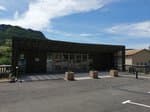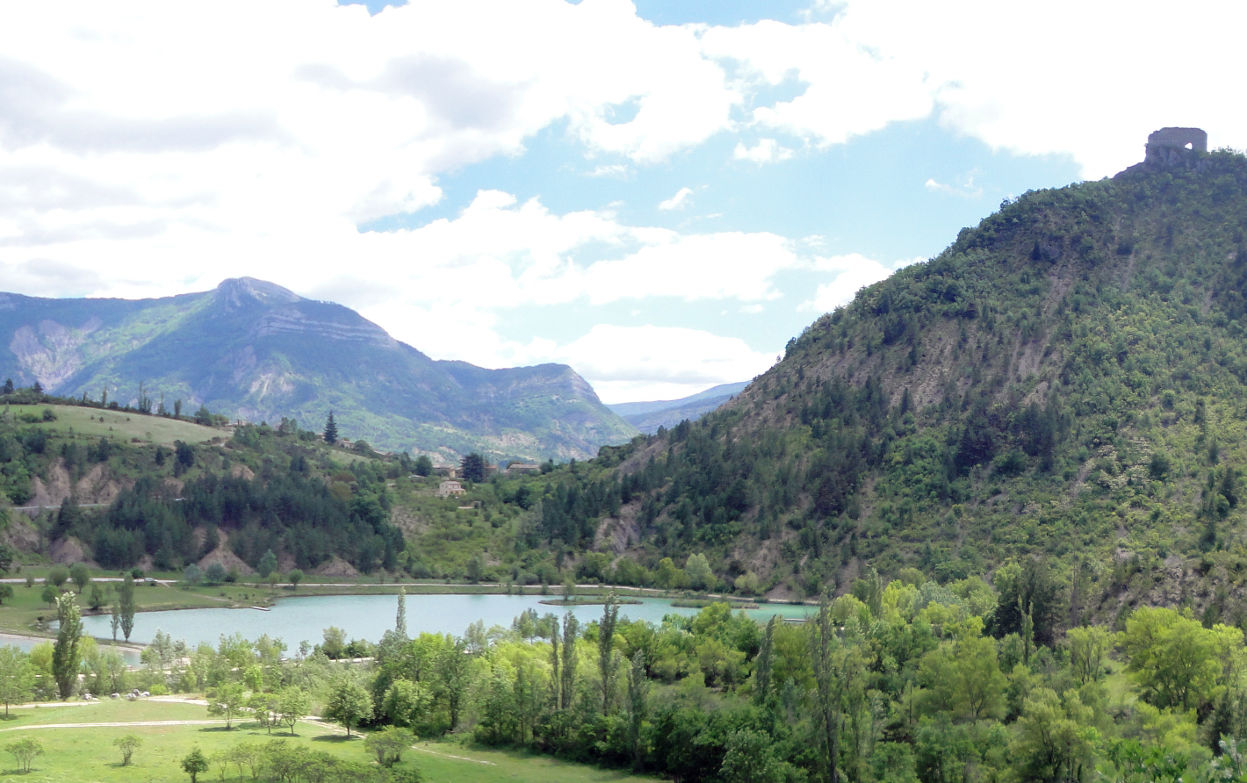
Le Pas des Ondes
This flat path road oscillates between the Pas des Ondes lakes and the bank of the Oule river. This easy walk and walkable with a stroller (if you do not go to the Clue) invites the stroll and the observation of nature related to these aquatic environments.
5 points of interest
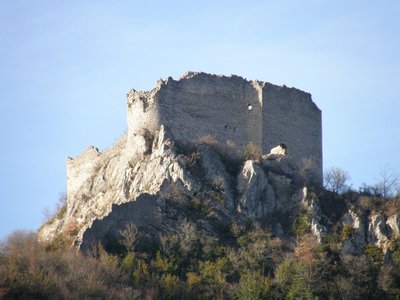
Les ruines du château de Cornillon - ©PNR Baronnies provençales  Patrimony and history
Patrimony and historyThe Cornillon old castle
The Cornillon-sur-l'Oule castle is one of the most impressive testimonies of the Provencal comtal power which controlled, between the 13th and the 15th century, a set of seigniories in the Oule valley, called the "claverie de l'Oule". The dimensions of the sides of its triangular enclosure are 44, 30 and 51 meters. To the east and below the castle stood the medieval village of Cornillon which only a portion of the northern wall that meets the castle is still visible.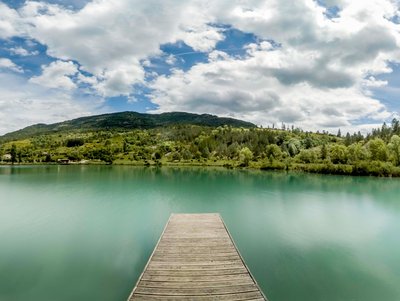
Ponton de pêche du Pas des Ondes - ©PNR Baronnies provençales  Fauna
FaunaFish and recreational fishing
The fish fauna of the lake was introduced during the creation of lakes in the 90s. Among these non-endemic fish in the environment are carp, roach, tench and rainbow trout, introduced to promote recreational fishing. The most representative species is the carp but we also find the Chevesne and the Common Perch (only predator). Two fishing pontoons are set up on site, including one for people with reduced mobility.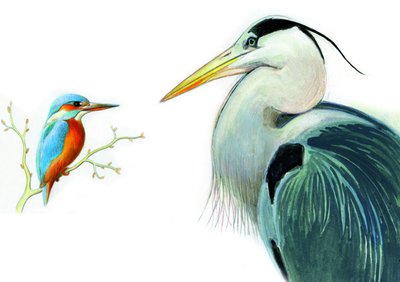
Le Martin-pêcheur et le Héron cendré - ©L. Millot  Fauna
FaunaThe Pas des Ondes birds
Between the banks of the river and those of the lakes, the gray heron and the Martin fisherman each have their hunting stations while the Black Milan occupies the role of the cleaner by recovering the corpses of fish and amphibians. The water bodies also host several species of remarkable birds for the region, in staging areas such as the Knights Cul-blanc and Guignette, the Northern Shoveler or Garganey and exceptionally the Osprey.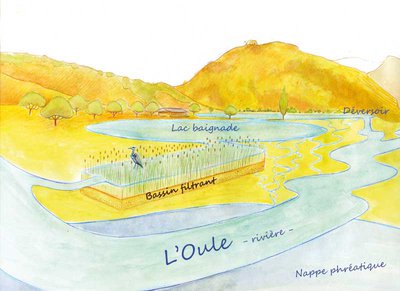
Fonctionnement hydraulique des plans d'eau - ©L. Millot  Water and rivers
Water and riversHydraulic operation of the basins
The hydraulic system of the bathing water of the Pas des Ondes reconstitutes a natural scheme of operation thanks to its settling basin where circulates the water that comes from the Oule with a flow rate of 30 L / s. The purpose of this pond is to filter and capture the fine particles of silt in suspension to limit the turbidity of the water and to keep a maximum of clarity for swimming. Once past the swimming lake, the water flows into the fishing pond before returning to the Oule.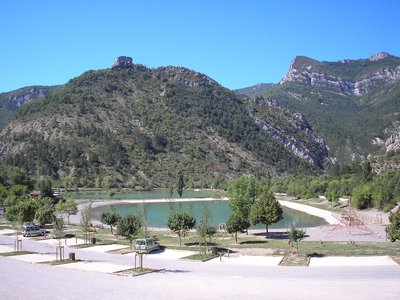
Les plans d'eau du Pas des Ondes - ©PNR Baronnies provençales  Water and rivers
Water and riversThe Pas des Ondes: the landscaped oasis!
Due to their good integration into the natural site of Pas des Ondes, these two water bodies do not necessarily show that they are actually artificial. Developed in the 90s to support local tourism development, the site of Pas des Ondes has since been an oasis particularly popular in the summer season. The smallest of the water bodies is intended for swimming while the largest is reserved for fishing.
Description
By being parked in the Pas des Ondes car park (parking and access to the water body in July and August are not free), return to the entrance gate of the site. Take the bank path between the Oule river and the lake : The starting point of the theme trail "Faune aquatique du Pas des Ondes" is located there. Follow this flat path for 600 meters to the end of the second lake and pass to the left of the educational pond.
1- Shortly after the two fishing pontoons, facing the hill surmounted by the ruins of the castle, take the small path that goes up the slope. After a turn on the left, the path leads to another path: take a right on this new path crossing towards the river, down to a road. Take a left on the path which turns into a path and join the bank of the river to a pebble beach.
2- Turn back and join the previous intersection.
3- Follow straight on the flat path between the river and the treatment plant and return to the educational pond.
4- Continue the tour of the water bodies along the banks by the flat road or the path through the grass that can be seen near the shores of water bodies.
- Departure : Body of water of the Pas des Ondes, Cornillon-sur-l'Oule
- Arrival : Cornillon-sur-l'Oule
- Towns crossed : Cornillon-sur-l'Oule and La Motte-Chalancon
Forecast
Altimetric profile
Recommandations
Parking and access to water body are not free in July and August.
Information desks
Maison du Parc naturel régional des Baronnies provençales
575 Route de Nyons – La plaine du Pont, 26510 Sahune
Les locaux du Parc naturel régional des Baronnies provençales ne sont pas ouverts au public.
OT Baronnies en Drôme Provençale - Rémuzat
Place du Champ de Mars, 26510 Rémuzat
OT Pays Diois - La Motte Chalancon
Place du Pont, 26470 La Motte-Chalancon
Access and parking
4 km south of La-Motte-Chalancon, by the D61.
Parking :
Access
The route is accessible to wheelchairs that do not perform the optional loop described in points 1, 2 and 3.
A pontoon for wheelchairs is installed on the fishing pond.
- Emergency number :
- 114
Report a problem or an error
If you have found an error on this page or if you have noticed any problems during your hike, please report them to us here:

